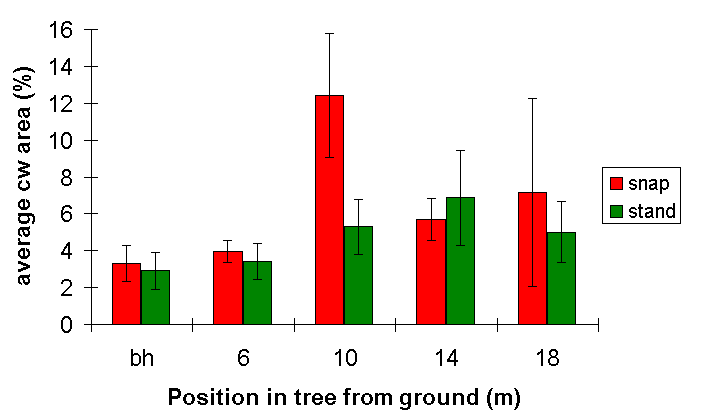Compression wood was measured by placing thin (3mm), waterlogged, slices of wood on a light box. The compression wood was located by its darker colour. The position of the compression wood was marked on tracing paper, and then digitised into an ARC/INFO coverage. The proportion of the cross-sectional area of the stem occupied by compression wood was calculated using an AML. Weighted compression wood area (where greater emphasis is given to compression wood at near the bark than to similar wood near the pith) was also calculated but the results were generally very similar to those reported here.
Average values for the ten snapped and ten undamaged pine trees from Blackhall forest are shown in the figure below.

Each bar represents data from a different height in the tree.
A general trend of increasing compression wood proportion with increasing height up the stem was found in the undamaged trees. On the other hand, in the snow-damaged trees, there was much more compression wood present at 10m than at any other height. This height is generally the disc closest to the point of snap. This suggests that compression wood may be linked to snow damage in Sitka spruce, although further work is needed to confirm this. The difference in compression wood proportion between the snapped and the undamaged trees at the 10m point in the stem is not quite significant, but very nearly so (p=0.07).
Return to main page